Summer is upon us, which means plenty of outdoor activities for most of us. This includes cookouts, picnics, boating, hiking, and of course, swimming. Also upon us is the publication of the 2023 edition of the National Electrical Code (NEC). With that in mind, this is a good time to review NEC Article 680, Swimming Pools, Fountains, and Similar Installations, focusing on proposed changes for the new edition of the NEC.
Before reviewing specific changes, let’s remember that Article 680 first appeared in the 1962 edition of the NEC and contained only three small pages of requirements. Interestingly, many of the topics addressed 50 years ago have stood the test of time and are still important today. Requirements concerning conduits extending from a forming shell to a junction box, isolating type transformers having a grounded metal barrier, receptacle proximity to a pool, overhead clearances, and of course, grounding and bonding were all included in the original version of the article. Also included was a requirement in Section 680-4(c) for when an underwater fixture was supplied by a voltage of more than 30 volts that a “fail-safe ground detector device which automatically de-energizes the circuit or an approved grid structure or similar safeguard” was to be used.

The 1965 edition of the NEC continued this protection concept in Section 680-4(g) and revised the wording to be using “differential circuit protection.” The 1968 edition of the NEC established the use of a “ground-fault circuit interrupter” in Section 680-4(h)(2), including a definition for the term. We’ve certainly seen an expansion of ground-fault circuit interrupter (GFCI) requirements since 1965, as these life-saving devices have saved countless lives and provided enhanced protection to personnel from ground faults. According to the Electrical Safety Foundation International (ESFI), since the 1970s, ground-fault circuit interrupters have saved thousands of lives and have helped cut the number of home electrocutions in half.
As our industry transitions to the 2023 edition of the NEC, additional time and effort reviewing and understanding changes to Article 680 will go a long way. Based on public inputs and public comments, Code-Making Panel (CMP)-17, which has purview over Article 680, has made various changes that will significantly impact installations. It was another busy revision cycle as the panel reviewed 155 public inputs in the first draft stage, resulting in 71 first revisions. In the second draft stage, CMP-17 reviewed 40 public comments, resulting in 21 second revisions. Let’s continue the discussion with a review of some of the changes.
The first noticeable change is the use of acronyms throughout Article 680. Most of this activity centers around ground fault circuit interrupter, which is now referenced as GFCI. The same concept holds true for special purpose ground-fault circuit-interrupter, or SPGFCI, a newly defined term that will be reviewed later in this article. The allowance for the use of acronyms is due to a change in the NEC Style Manual in Section 3.2.3. For those not familiar with this manual, it is easily accessible on NFPA’s website free of charge. The purpose of the Style Manual is to advise CMP members on the required editorial style and arrangement of the Code. The manual states in Section 1.1 that its purpose is “to be used as a practical working tool to assist in making the documents as clear, usable, and unambiguous as possible.”
A second noticeable change is that many previous references in Article 680 that pointed to requirements in Chapters 1 through 4 have been deleted. This is also due to a change in the Style Manual, which occurred in Section 4.1.1, which states that “general requirements contained in Chapters 1 through 4 shall not be repeated in other articles of the document.” Additionally, let’s not forget that NEC Section 90.3, Code Arrangement, and Figure 90.3 make it clear that Chapters 1 through 4 apply generally to all electrical installations. This includes installations associated with Chapter 5 (Special Occupancies), Chapter 6 (Special Equipment), and Chapter 7 (Special Conditions). Chapter 8, Communication Systems, continues to be stand-alone and not subject to the requirements of Chapters 1 through 7 unless they are specifically referenced.
The next change to be aware of is that all the definitions from Part I of Article 680 have been reformatted and relocated to Article 100. This action was part of a global effort that impacted all articles in the NEC and, again, was driven by another change to the Style Manual. Section 2.2.2 of the manual now requires that all definitions be located in Article 100 and that the article shall not be subdivided into parts. Users of the Code will have to become comfortable with navigating directly to Article 100 for all definitions, whether the term is associated with swimming pools, hazardous locations, grounding and bonding, or wiring methods, just to name a few.
Definitions: Types of Pools
Various definitions associated with Article 680 have been revised. Let’s start with two popular terms: permanently installed pool and storable pool. A permanently installed pool is now described as being constructed or installed in the ground or partially in the ground. This includes all pools installed inside of a building, even if there are no electrical circuits associated with them. A storable pool is now described as being installed entirely on or above the ground. These pools are also intended to be stored when not in use as well as designed for ease of relocation, no matter how much water they can hold.
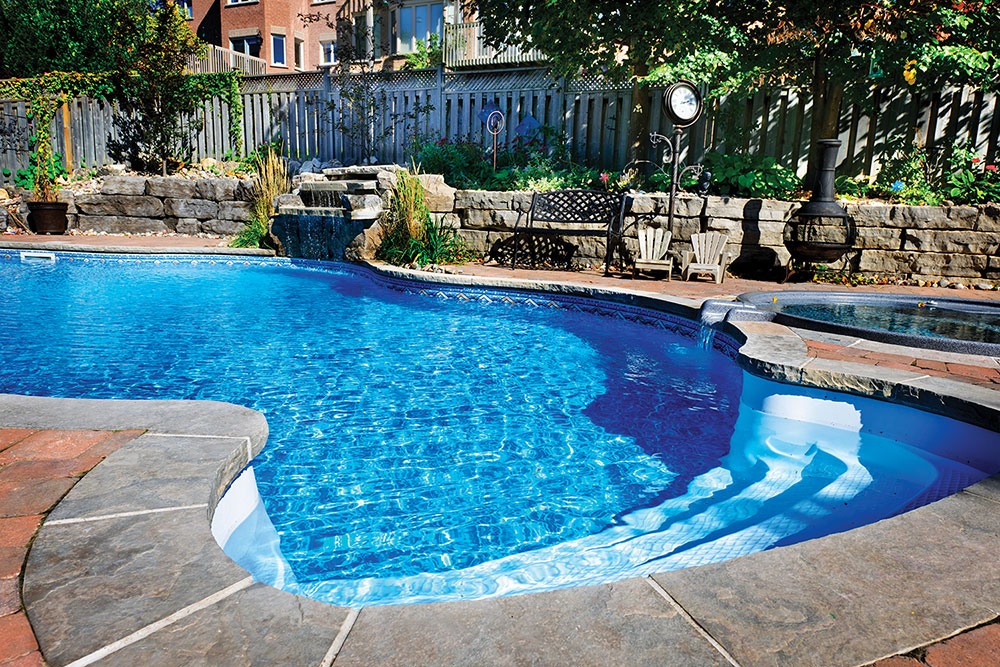
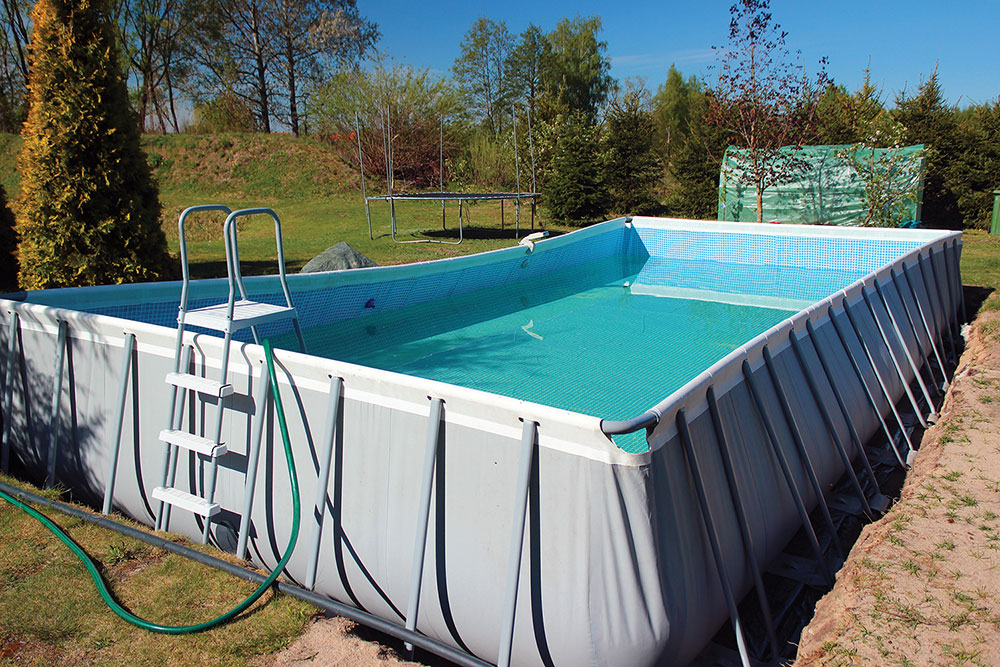
A key part of the change to these definitions is removing language associated with the amount of water each can hold. Previously there was a 42-inch measurement referenced in both definitions, which has now been removed. Storable type pool installers and authorities having jurisdiction (AHJs) will most likely have to rely on installation instructions from the manufacturer and instructions included in the listing to provide guidance as to the intention and design. The requirement for all equipment in Article 680 to be listed has not changed, thus requiring compliance with Section 110.3(B), Installation and Use.
Definitions: Corrosive Environments
Another important revised definition concerns corrosive environments. Requirements for corrosive environments specific to Article 680 installations first appeared in the 2017 edition of the NEC, so they are still relatively new, and our industry continues to digest their ramifications. Moving forward, the definition has been revised to describe the corrosive environment as areas or enclosures without adequate ventilation. This environment is also where electrical equipment is located and where pool chemicals are stored, handled, or dispensed. It’s important to note that the definition is broad as to location, thus, corrosive environments can be either indoors or outdoors. Additionally, no specific distances are associated with the definition due to the determination of adequate ventilation at the area or enclosure. The two revised informational notes that support the definition provide direction as to where to locate requirements associated with providing adequate ventilation relative to swimming pool and spa installations. This includes references to information from the Environmental Protection Agency (EPA) National Service Center for Environmental Protection (NSCEP), ANSI/ASHRAE 62.1, Table 6-4 Minimum Exhaust Rates, and the International Swimming Pool and Spa Code (ISPSC).
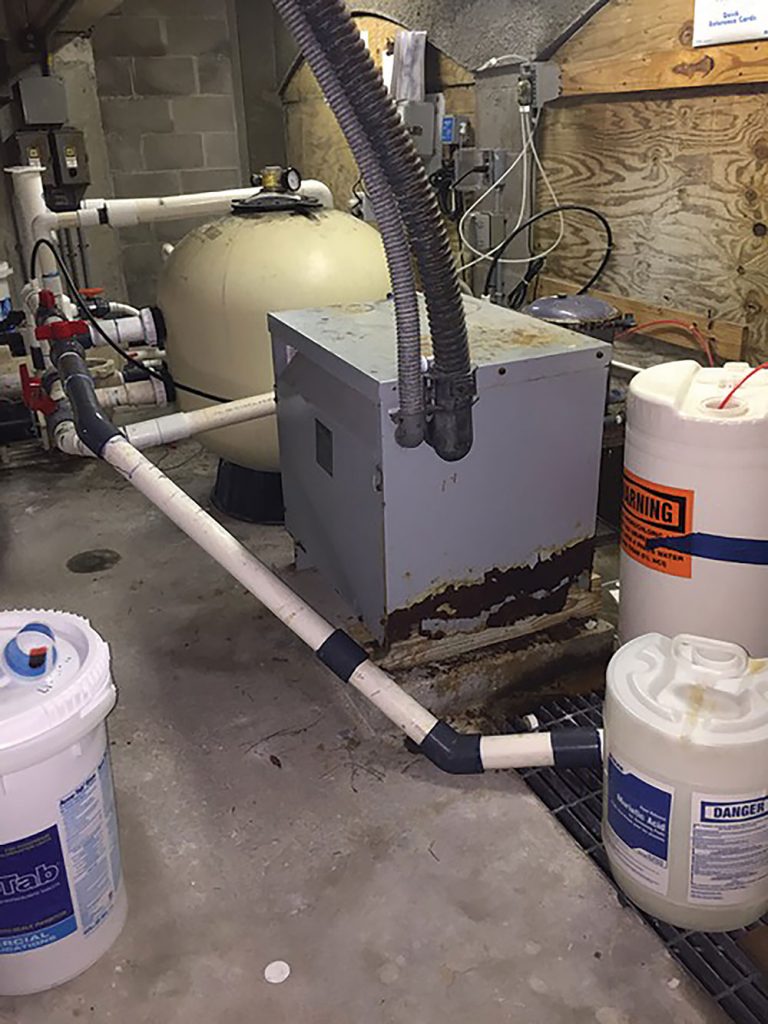
SPGFCI Protection
As mentioned previously there is a new definition, with a supporting informational note, for SPGFCI. The addition of this new term was the result of a task group recommendation as directed by the Correlating Committee. The task group was asked to review the use of the term GFCI and other terminology associated with ground-fault protective equipment to ensure consistency with how the terms are defined. An SPGFCI is described as a device to detect ground faults in circuits with voltage to ground greater than 150 volts. Its function is to de-energize a circuit, or a portion of a circuit, when the ground fault current exceeds thresholds established for SPGFCI Class C, D, and E devices. The new definition is based on information from UL 943C, Outline of Investigation for Special Purpose Ground-Fault Circuit-Interrupters, which is referenced in the informational note. SPGFCIs are for use only when circuits with voltage to ground is greater than 150 volts. This term was added to correlate with additional changes at Section 680.5, which we’ll review next.

The title and requirements of Section 680.5 GFCI and SPGFCI Protection has been revised and expanded. This section is now the “go to” section that describes the type of ground fault protection required throughout Article 680. For example, Sections 680.22(A)(4), 680.22(B)(4), 680.32, and others, contain specific ground fault requirements but also include a reference back to Section 680.5. The ground fault protection requirements have been separated by voltage thresholds. Section 680.5(B) now addresses circuits rated 150 volts or less to ground and requires Class A GFCI protection. This includes receptacles and outlets supplied from branch circuits rated 60 amperes or less, single or three-phase. Class A GFCI devices are designed to trip when the ground-fault current is 6mA or higher. People exposed to higher current levels may be unable to voluntarily control their muscles and release themselves from energized equipment. This is often referenced as the “let go threshold.”
As current levels increase beyond 10mA, a person may experience muscle contractions, respiratory arrest, ventricular fibrillation, or nerve damage. Section 680.5(C) now addresses circuits rated above 150 volts to ground and requires SPGFCI protection. This includes receptacles and outlets supplied from branch circuits not exceeding 480 volts, single or three phase. Circuits rated above 150 volts exist in some commercial installations where supplied voltages can be 120/240 volt 4-wire delta or 480/277 volts wye for example. SPGFCI protection is not considered personnel protection as their current thresholds may be below human fibrillation levels, but they are not below human let go thresholds. SPGFCI protection can be either Class C, D, or E, based on the circuit voltage rating and the type of equipment grounding provided. Some classes are for use in circuits where no grounding is provided to the load, but the equipment is double insulated.
As mentioned previously, UL 943C, Outline of Investigation for Special Purpose Ground-Fault Circuit Interrupters, provides additional details for industry. Class C protection is designed to be used in circuits with no conductor over 300 volts AC to ground. It also requires equipment grounding or double insulation to be provided. Class D protection is designed to be used in circuits with one or more conductors over 300 volts to ground. It also requires “specially sized, reliable grounding” to limit the voltage across the body to not exceed 150 volts during a fault. Class E protection is also designed to be used in circuits with one or more conductors over 300 volts. It also requires “conventional equipment grounding” or double insulation be provided. Class E responds quickly to open the circuit prior to current flow through the body that would reach ventricular fibrillation levels.
Grounding and Bonding
I think it’s safe to say that most Code discussions will sooner or later touch on grounding and bonding, so let’s review relevant changes in Article 680. First, the previous Section 680.6, Bonding and Equipment Grounding, has been deleted. A careful examination of the previous language showed that it was redundant as it referenced requirements in Chapters 2 and 3. As reviewed earlier in this article, changes to the NEC Style Manual and Section 90.3 make it clear that Chapters 1 through 4 apply generally and do not have to be repeated.
Additionally, Section 680.7, Grounding and Bonding, has been revised and reformatted for clarity. Section 680.7(A) contains requirements specific to feeders and branch circuits. If they are installed in a corrosive environment or wet location, an insulated copper equipment grounding conductor is required. Section 680.7(B) now addresses cord and plug connections. In previous editions of the Code, identical grounding requirements were repeated many times throughout the article. For example, a flexible cord with a copper equipment grounding conductor sized in accordance with Table 250.122, but not smaller than 12 AWG, terminating in a grounding-type attachment plug having a fixed grounding contact member appeared at least a half dozen times. These identical requirements are now stated once. Section 680.7(C) is the new home for requirements concerning terminals. The language associated with field-installed terminals was revised to reference damp or wet locations, as both are defined terms in Article 100.
Another change to highlight is the new information in Section 680.10 concerning swimming pool heat pumps and chillers. This type of equipment is often used in various swimming pool installations and requires specific requirements to support its installation. This equipment is required to be listed and rated for its intended use. The equipment nameplate will provide the needed information to determine the ampacity of branch circuit conductors and overcurrent protection.
Continuing with Part I of Article 680, let’s now review changes to Section 680.12. First, the title has been changed to include vaults, in addition to equipment rooms and pits. The section has also been reformatted to separate requirements for drainage and receptacles. The language concerning drainage has been revised to recognize that equipment rated and identified for submersion can be installed where drainage is not provided as the equipment’s inherent design provides protection.
Additionally, a requirement has been added for at least one GFCI protected receptacle to be installed and located in an equipment room. This receptacle is needed for installers and maintainers who service equipment in these rooms. The concept of a receptacle in these rooms is not new. The requirement previously existed in Section 680.22(A)(5) and was specific to a pool equipment room associated with a permanently installed pool. Relocating the requirement to Section 680.12 in Part I makes it apply more broadly. Fountain and spa equipment rooms are examples of where this requirement will now apply.
We previously reviewed the changes to the definition of a corrosive environment. Now let’s examine the changes to Section 680.14 specific to wiring methods and other equipment installed in these environments. The previous language associated with wiring methods being “listed and identified” has been replaced with “suitable for use” to purposely correlate with Section 300.6, Protection Against Corrosion and Deterioration. CMP-17 supported this action in their panel statement by stating, “…at the present time, there are no wiring methods listed and identified specifically for corrosive environments in and around pools or similar installations. Product standards would most likely have to be revised or developed to address this.”
The option for other equipment to be installed in identified corrosion-resistant enclosures has been added as these enclosures can provide the needed protection. Additionally, to improve clarity and address concerns from the electrical industry, language has been added that states: “equipment listed for pool and spa use is considered suitable for use in corrosive environments.”
Part II — Permanently Installed Pools
Let’s now move to Part II of Article 680, which contains requirements for permanently installed pools. Section 680.21(D) has been revised to clarify that when a pool pump motor is replaced or repaired for any reason, GFCI protection is required to be installed. Previously, GFCI protection was only required when the pool pump motor was replaced because of “maintenance or repair.” In fact, pool pump motors can be repaired or replaced for various reasons such as maintenance, end of life, physical damage, and others. This has been and will continue to be, challenging for AHJs to enforce as pool pump motor replacement is often performed by homeowners, pool maintenance technicians, handymen, or others who may not be familiar with the importance of personnel protection.
Continuing in Part II, Section 680.25, Feeders, has been deleted in its entirety. The deleted language previously referenced corrosive environments, aluminum conduit, as well as grounding and bonding. These items are now addressed in Sections 680.7 and 680.14.
The last revision in Part II to highlight is Section 680.26(B)(7), Equipotential Bonding of Fixed Metal Parts. This section has been reorganized to provide clarity and improve usability, including removing two exceptions. The exceptions were reworded into positive language and included in the list of items of the requirement. This action also correlates with Section 3.1.4 of the NEC Style Manual, which requires exceptions to be used sparingly. The revision does not change any requirements from a technical perspective. All fixed metal parts must be bonded when they are located within 5 ft horizontally from the inside walls of a pool or 12 ft vertically above the maximum water level of the pool. The only exception is fixed metal parts separated from the pool by a permanent barrier that prevents a person from coming in contact with them.
Part IV — Spas, Hot Tubs, and Permanently Installed Immersion Pools
Now let’s move to Part IV, Spas, Hot Tubs, and Permanently Installed Immersion Pools. Section 680.42(C), previously titled “Interior Wiring to Outdoor Installations,” has been retitled “Underwater Luminaires” to more accurately reflect its content. Again, redundant language which referenced Chapter 3 has been deleted. The informational note that referenced feeders was also deleted as it was no longer necessary due to the deletion of Section 680.25. After all of that, we are left with a reference back to Sections 680.23 or 680.33 for underwater luminaire requirements.
Part V — Fountains
Our next stop is Part V, Fountains. Section 680.54(B) Bonding has been revised to clarify that if a conductor is used for bonding, it is required to be a minimum of 8 AWG solid copper. In previous editions of the Code, there was no guidance on how to bond together the parts called out in the six list items, such as metal piping systems, metal fittings, metal raceways, etc. Speaking of list items, list item (6) was also revised to electrical “equipment” located less than 5 ft of the inside wall or perimeter of the fountain as equipment is a defined term in Article 100. The previous references to devices and controls have been removed as they are considered equipment by definition.
Part VIII — Electrically Powered Pool Lifts
The last change to review is in Part VIII, Electrically Powered Pool Lifts. Section 680.83 has been retitled to “Equipotential Bonding,” and specific requirements, similar to those in 680.54(B), have been added to indicate the method of bonding, which previously was not indicated. Language has been added that lift bonding is to be accomplished by using solid copper conductors, a minimum of 8 AWG. This 8 AWG or larger conductor is to reduce voltage gradients in the pool lift area and is not required to be extended or attached to remote panelboards, service equipment, or electrodes. These changes correlate the equipotential bonding requirements in Section 680.26(B) with 680.83.
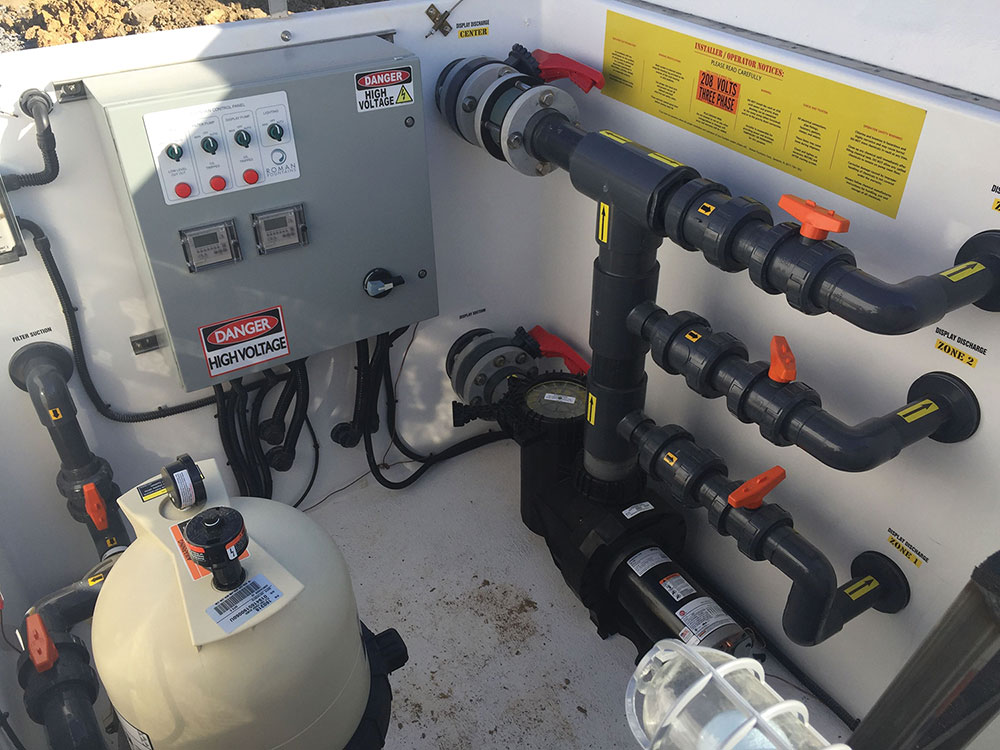

Conclusion
We’ve reviewed various proposed changes in Article 680 but keep in mind that other revisions were made that should be reviewed. Some changes have a larger impact than others, so I encourage everyone to spend time in Article 680 and research changes throughout the Code. A great way to get your arms wrapped around the 2023 NEC changes is to attend a local IAEI Division, Chapter, or Section meeting. It’s also an outstanding way to interact with your peers, build your network of resources, meet CMP members, and ask questions. I hope to see you at one in the near future!





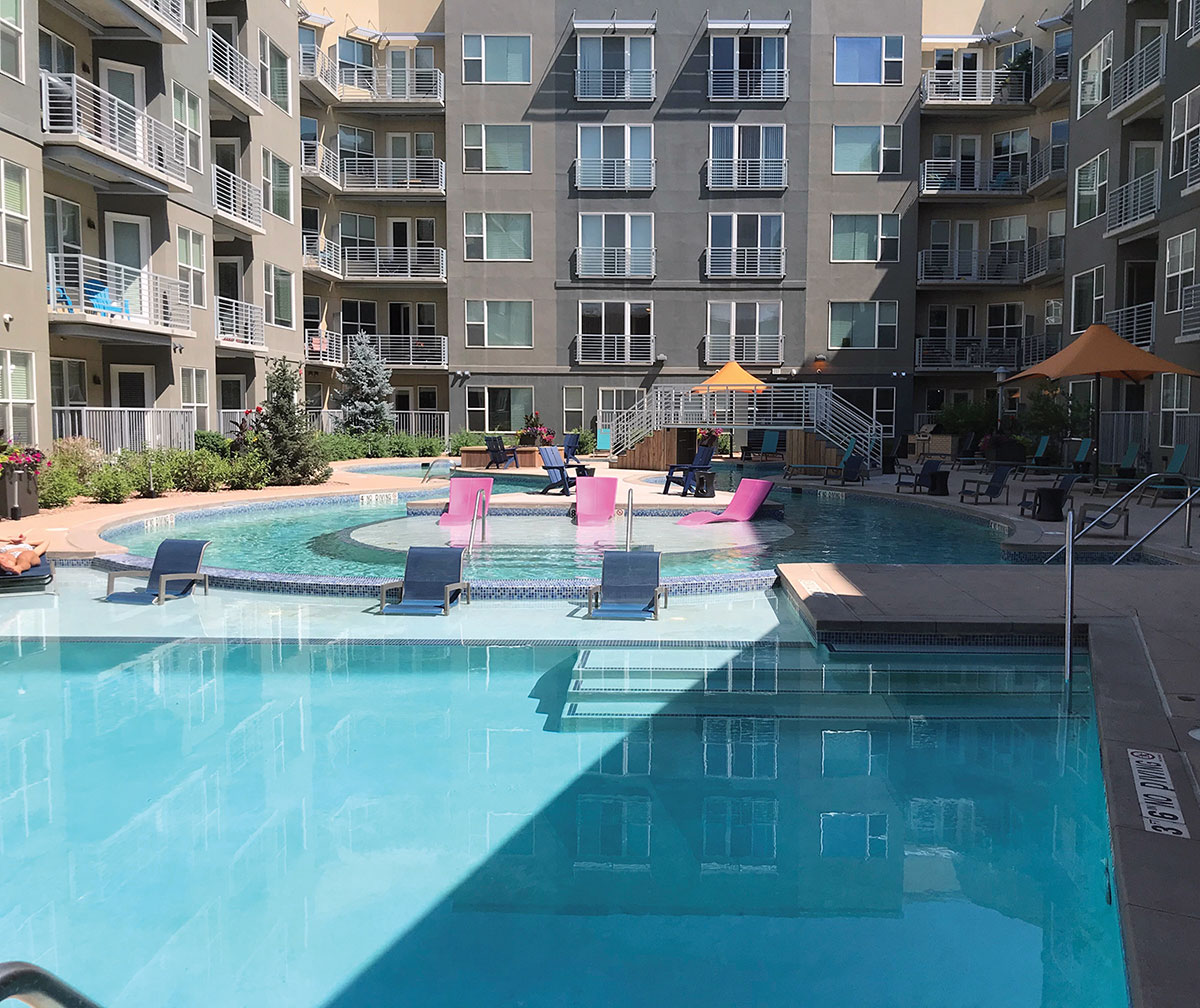







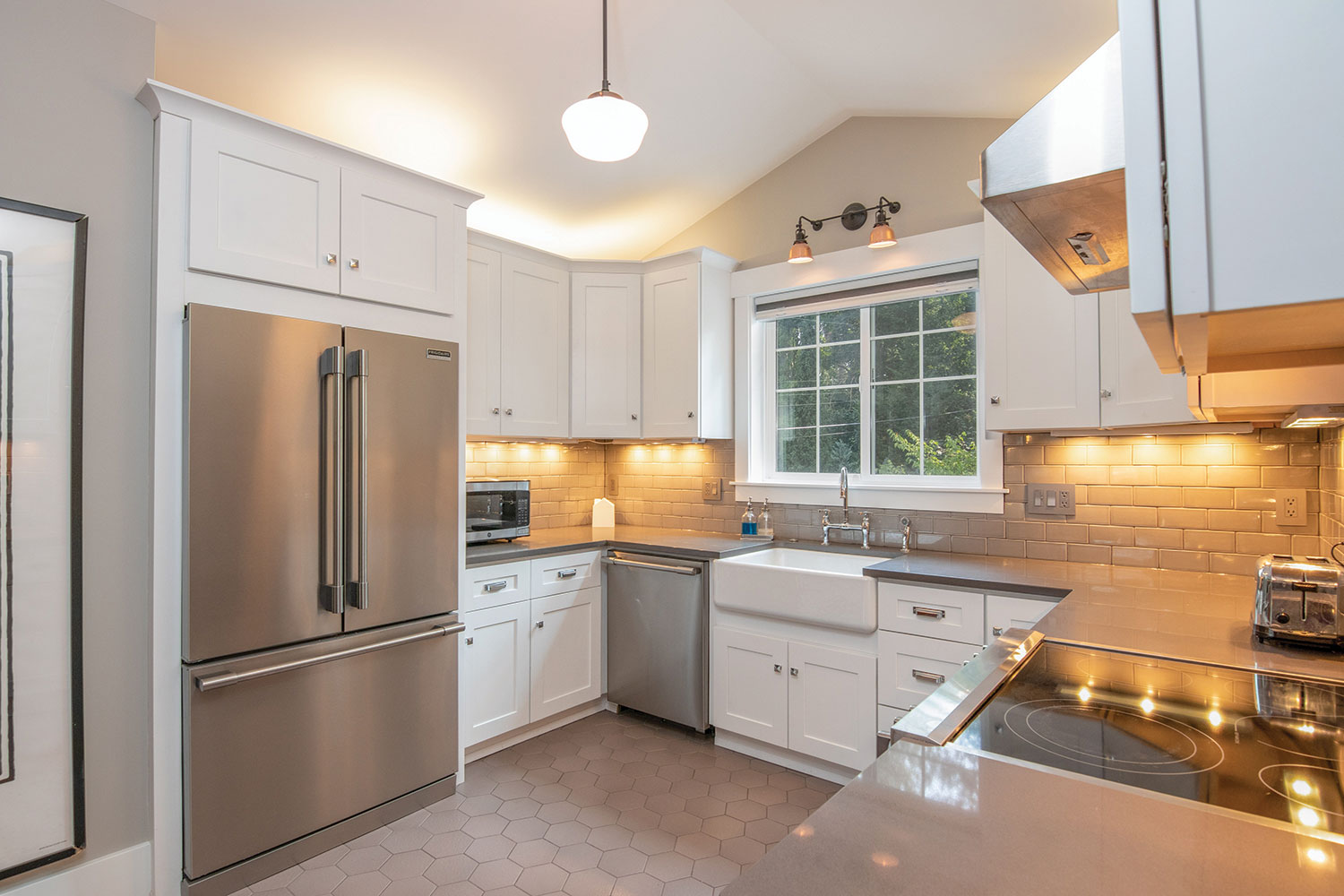

Find Us on Socials